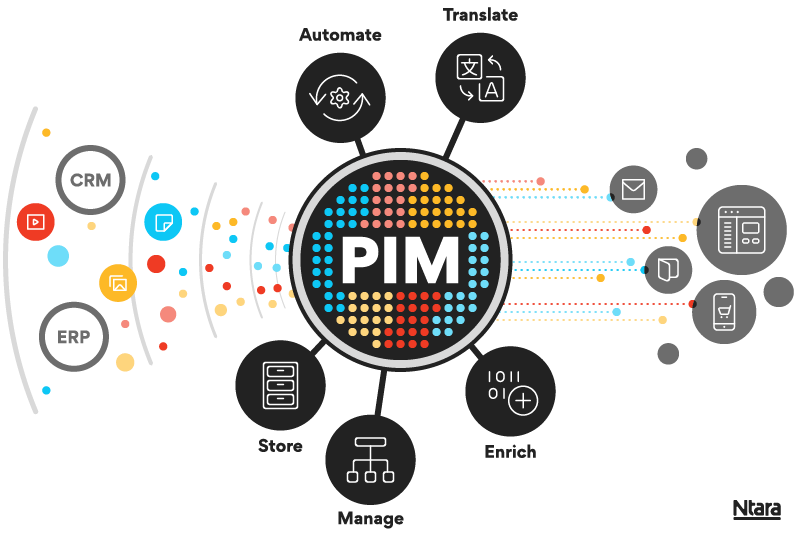As a business grows, so does the need to consolidate and organize how its product data is stored and shared. This process often includes the implementation of a product information management (PIM) system.
The definition of product information management
PIM is a software that provides companies with a single location for centralizing and standardizing product data and related assets.
As product catalogs grow, relying on manual manipulation of product data can lead to inefficiencies and risks further down the line. With PIM at the center of a digital ecosystem, product data processes can become more automated. PIM software can collect data from existing systems and distribute it to others, while giving an organization one source of truth for adding, editing, and enriching data.

And because PIM allows all information to be in one location, businesses can streamline all future product data updates. This enables growth by allowing organizations to become more efficient and agile, shortening the time it takes to get new products to market.
What types of data does PIM help with?
PIM systems allows users to store, enrich, and manage complex product-related data, such as product specifications, marketing copy, product photography, 3-D rendered images, and more. It streamlines the process of updating and managing accurate information throughout multiple systems and marketing channels.
Besides enabling a company to operate more efficiently, PIM guarantees that the same product details are delivered across every sales channel to the customer in a consistent way.
What channels can PIM software push content to?
PIM software safeguards product information by creating a central location for keeping everything up-to-date and accessible across your organization. It integrates with ecommerce platforms and marketplaces to improve product catalogs, pricing, marketing messaging, and more.
PIM software can also push data to non-selling websites that house product data but do not have online checkout, such as a dealer’s website.
PIM software can be used to house print collateral, such as catalogs, owner’s manuals, sell sheets, and PDF templates. Product data can be injected from PIM software into various templates, so you don’t have to manually create every page for every product.
Translation services can connect through integrations to provide data back to the PIM software in every language needed.
Also, PIM software works with enterprise resource management (ERP) software to import your basic product information right at the beginning of the process. And PIM can link up with customer relationship management (CRM) systems to pass product data, as well.
A well-built PIM system will integrate with the systems your business uses to provide a central source of all product-related data.
Who benefits from product information management?
A PIM software solution provides a central data core where everyone can access, manage, and contribute. By eliminating redundant spreadsheets and databases, PIM software enables data governance and will increase productivity across every department.
Employees can reduce the time and effort involved in updating, publishing, and searching product information. Also, by improving communication, PIM software can reduce human error and improve collaboration among departments, such as merchandising, marketing, product design, engineering, IT, and customer service—as well as external partners like suppliers, distributors, dealers, and retailers.
PIM software helps the entire business and anyone else involved with the business.
The value of product information management
Investing in a PIM software solution can help your business in several ways.
PIM software can speed up the launch of new products into the market. Delivering standardized product information that is syndicated between channels is the most efficient way to scale businesses into new marketplaces.
Also, once the data is standardized, product information can be translated easily into other languages for expansion into new territories and countries. These efforts help preserve brand integrity, eliminate inconsistencies, improve workflow efficiency, and ultimately lead to more revenue.
As a business grows, so does the need to consolidate and organize how its product data is stored and shared. This process often includes the implementation of a product information management (PIM) system.
Let’s talk.
Schedule a no-pressure meeting with a member of our PIM software team to determine how your business can gain back valuable time with PIM.